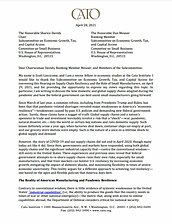Since March of last year, a common refrain, including from Presidents Trump and Biden, has been that that pandemic‐related shortages revealed major weaknesses in America’s “economic resilience” — weaknesses caused by past U.S. policies and demanding new federal government action. Surely, these claims have a nugget of truth: Global supply chains and a nation’s openness to trade and investment inevitably involve a risk that a “shock” — war, pandemic, natural disaster, etc. — hits the world or certain key nations and roils domestic supply. Such issues definitely arose a year ago, when factories shut down, container ships sat empty at port, and our grocery store shelves were empty. Such is the nature of a once‐in‐a‐lifetime shock to global supply and demand.
However, the story of COVID-19 and our supply chains did not end in April 2020, though many today act like it did. Since then, governments and markets have responded, using both global supply chains and the significant industrial capacity that — contra the conventional wisdom — still exists in the United States. These experiences and previous ones reveal that federal government attempts to re-shore supply chains raise their own risks, especially for small manufacturers, and that freer markets can bolster U.S. resiliency by increasing economic growth, mitigating the impact of domestic shocks, and maximizing flexibility in times of severe economic uncertainty. This reality argues for a different approach to achieving real resiliency — one based on the open and flexible policies that America does best.


